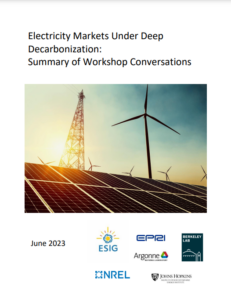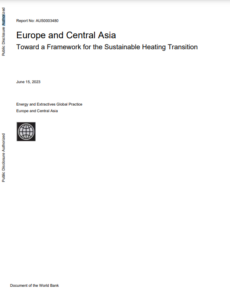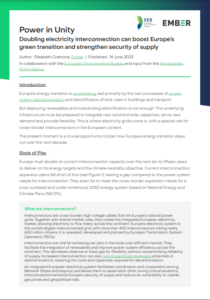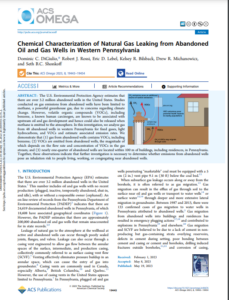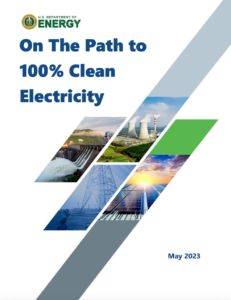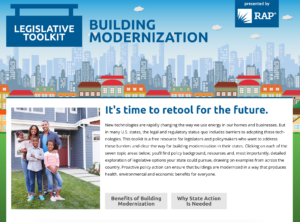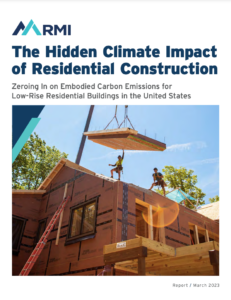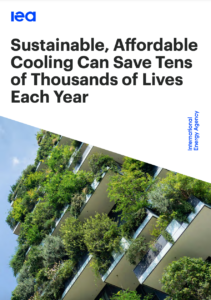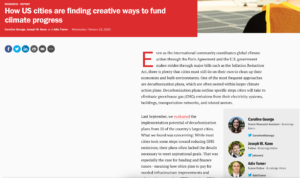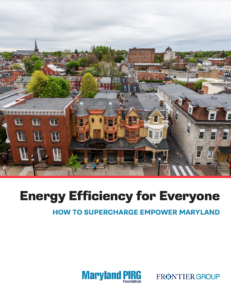The OurEnergyLibrary aggregates and indexes publicly available fact sheets, journal articles, reports, studies, and other publications on U.S. energy topics. It is updated every week to include the most recent energy resources from academia, government, industry, non-profits, think tanks, and trade associations. Suggest a resource by emailing us at info@ourenergypolicy.org.
Resource Library
121 to 130 of 343 item(s) were returned.
The energy system is going through a remarkable transition. To meet climate and carbon reduction goals, numerous local and federal government policies, corporate goals, and consumer preferences are leading toward a lower-carbon future. A key part of that low-carbon future is a low-carbon electricity supply fleet and the electrification of other sectors such as buildings and transportation. This can create challenges, as the way in which the electric power system is planned for and operated can be significantly different from what it is today. In 2019, the Energy Systems Integration Group facilitated a workshop to review several workstreams representing the …
View Full ResourceThe heating sector in the World Bank’s Europe and Central Asia (ECA) Region is unsustainable. District heating (DH), where available, relies heavily on coal and natural gas, often provides substandard levels of service, and is typically unable to fully recover its costs. Households that do not have access to DH rely mostly on underpriced coal and unregulated firewood, burned in boilers or stoves that are almost always inefficient and polluting. On the demand-side, only a small fraction of the building stock has been renovated; as a result, buildings often consume 2-3 times more energy per square meter than those in …
View Full ResourceEurope’s energy transition is accelerating, led primarily by the twin processes of power system decarbonisation and electrification of end-uses in buildings and transport.
But deploying renewables and incentivising electrification is not enough. The underlying infrastructure must be prepared to integrate new wind and solar capacities, serve new demand and provide flexibility. This is where electricity grids come in, with a special role for cross-border interconnectors in the European context.
The present moment is a crucial opportunity to plan how Europe’s energy transition plays out over the next decade.…
View Full ResourceIn a peer-reviewed study published by the American Chemical Society, researchers from PSE Healthy Energy (PSE) analyzed gas from 48 abandoned wells in western Pennsylvania for fixed gases (e.g., oxygen, nitrogen, and carbon dioxide), light hydrocarbons (e.g., methane, ethane, and propane), and volatile organic compounds. This allowed the researchers to estimate the total emissions of a well—including both greenhouse gases and health-damaging air pollution.
Abandoned oil and gas wells in western Pennsylvania are often within one kilometer of buildings—a distance deemed higher-risk by a large body of research. Given the concentrations of benzene and other hazardous air pollutants found in …
View Full ResourceRapid decarbonization of the power sector is a critical strategy for meeting the nation’s climate goals of reducing economy-wide greenhouse gases by 50-52% below 2005 levels in 2030, on the way to net-zero economy-wide greenhouse gas (GHG) emissions by no later than 2050. Power-sector decarbonization is especially important because efficient electrification, when paired with clean electricity, can decarbonize large parts of the transportation, buildings, and industrial sectors. Recognizing the key role of the power sector in overall decarbonization and other key benefits, the United States has set a goal of 100% carbon pollution-free electricity by 2035.
The U.S. power sector …
View Full ResourceNew technologies are rapidly changing the way we use energy in our homes and businesses. But in many U.S. states, the legal and regulatory status quo includes barriers to adopting these technologies. This toolkit is a free resource for legislators and policymakers who want to address these barriers and clear the way for building modernization in their states. Clicking on each of the seven topic areas below, you’ll find policy background, resources and, most importantly, detailed exploration of legislative options your state could pursue, drawing on examples from across the country. Proactive policy action can ensure that buildings are modernized …
View Full ResourceNew home construction in the US creates over 50 million tons of embodied carbon emissions annually, equivalent to the emissions from 138 natural gas–fired power plants or the yearly emissions from entire countries such as Norway, Peru, and Sweden. However, the sector has a unique opportunity to reduce tens of millions of tons of emissions and become a leading contributor to US climate targets, quickly and efficiently. Understanding and reducing overall climate impact requires paying attention to the upstream, or embodied, emissions that result from producing building materials such as concrete and insulation in addition to the downstream operational emissions …
View Full ResourceEnergy demand for space cooling has increased more than twice as fast as the overall energy demand in buildings over the last decade. Higher temperatures caused by climate change, coupled with increasing incomes and growing populations, are driving rapid growth in residential air conditioning (AC) ownership.
Access to effective cooling has saved tens of thousands of lives; over the same period, the average annual number of heat-related deaths averted by AC increased 3-fold, reaching an estimated 190 000 lives saved per year during 2019-2021. However, the rapid growth of AC is putting stress on the power grid, whilst exacerbating the …
View Full ResourceEven as the international community coordinates global climate action through the Paris Agreement and the U.S. government makes strides through major bills such as the Inflation Reduction Act, there is plenty that cities must still do on their own to clean up their economies and built environments. One of the most frequent approaches are decarbonization plans, which are often nested within larger climate action plans. Decarbonization plans outline specific steps cities will take to eliminate greenhouse gas (GHG) emissions from their electricity systems, buildings, transportation networks, and related sectors.
This report summarizes specific funding and financing policies found in 50 …
View Full ResourceThe Empower Maryland Energy Efficiency Act of 2008 has done a lot to improve energy efficiency in Maryland – saving utility customers money, reducing pollution and helping protect the environment. But now, a decade and a half after it was first adopted, the programs that resulted from it can and should be updated to meet more of the state’s needs and better serve Marylanders. With smart reforms, the next iteration of EmPOWER Maryland can achieve greater total energy and financial savings, better serve limited-income Marylanders, and deliver even more environmental and public health benefits.
Maryland utilities are leaving energy savings …
View Full Resource